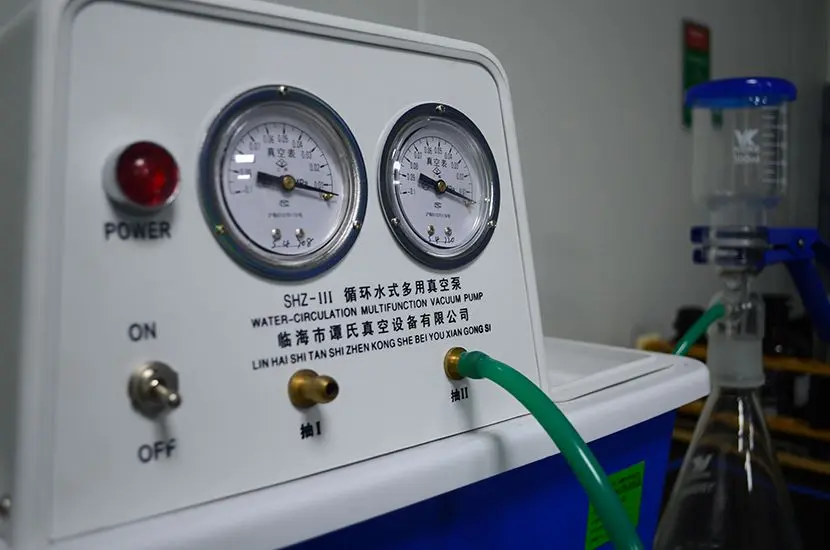
What is PAHs Testing?
PAHs (Polycyclic Aromatic Hydrocarbons) refer to a class of organic compounds containing two or more benzene rings. These compounds, including over 150 types such as naphthalene, anthracene, phenanthrene, and pyrene, are hydrocarbons with two or more fused benzene rings. Some PAHs also contain nitrogen, sULfur, or cyclopentane. Many PAHs, particularly those with four to six fused rings, are known to be carcinogenic. The International Agency for Research on Cancer (IARC) identified 94 compounds as carcinogenic to laboratory animals in 1976, 15 of which are PAHs. Benzo[a]pyrene, the first identified environmental cheMICal carcinogen, is often used as a representative of PAHs and constitutes 1%–20% of all carcinogenic PAHs.

Health Risks of PAHs
PAHs primarily affect the respiratory system and skin. Prolonged exposure to PAH-contaminated environments can cause acute or chronic health issues, including:
- Photosensitive dermatitis
- Acne-like dermatitis
- Folliculitis
- Wart-like growths
Regulatory Framework
Global Standards
Numerous international regulations govern PAHs, including:
- REACH Annex XVII (European Union)
- German GS Certification and LFGB
- U.S. EPA
- China GB Standards
European Union
On December 7, 2013, regulation (EU) No. 1272/2013 amended REACH Annex XVII to extend PAHs restrictions to consumer goods. This regulation took effect on December 27, 2015.
Germany
Germany has enforced PAHs control for GS-certified products since April 1, 2008. The German Technical Equipment and Consumer Products Committee (AtAV) mandates compliance with the 16 PAHs specified by the U.S. EPA. In 2011, Germany released ZEK01.4-08, updating PAHs testing requirements to include benzo[j]fluoranthene and benzo[e]pyrene, expanding the controlled list to 18 compounds. This update became effective on July 1, 2012. Subsequently, the German Product Safety Committee (AfPs) issued revised PAHs requirements for gs certification, effective July 1, 2015.
PAHs in Materials
PAHs are commonly found in:
- Charcoal
- Petrochemical products
- Pharmaceuticals
- Dyes
- Plastics and rubbers
- Pesticides
- Lubricating oils and rust-proofing agents
- De-molding agents
- Electrolytes in capacitors
- Insecticides, fungicides, mosquito coils
- Cigarettes
- Gasoline stabilizers
- Other incomplete combustion products
Testing Process
1. Consultation: The applicant provides product information and descriptions.
2. Quotation: Technical engineers assess the project and provide a cost estimate.
3. Acceptance: The applicant approves the quote.
4. Submission: The applicant submits a testing application form along with samples.
5. Testing: Laboratory tests are conducted following applicable standards.
6. Report: A detailed testing report is issued.
7. Certification: A compliance certificate is issued for passing products.
Main PAHs Compounds
The main 18 PAHs include:
1. Naphthalene
2. Acenaphthylene
3. Acenaphthene
4. Fluorene
5. Phenanthrene
6. Anthracene
7. Fluoranthene
8. Pyrene
9. Benzo(a)anthracene
10. Chrysene
11. Benzo(b)fluoranthene
12. Benzo(k)fluoranthene
13. Benzo(a)pyrene
14. Indeno(1,2,3-cd)pyrene
15. Dibenzo(a,h)anthracene
16. Benzo(g,h,i)perylene
17. 1-Methylnaphthalene
18. 2-Methylnaphthalene
Advantages of China's JJR Laboratory
1. Professional Expertise: Experienced experts providing consultation and services.
2. Advanced Equipment: Ensures accurate and reliable testing results.
3. Global Trust: Recognized as a reliable third-party certification body.
Email:hello@jjrlab.com
Write your message here and send it to us
 What Are the Testing Items of California Propositi
What Are the Testing Items of California Propositi
 E-Cigarette EU TPD Testing
E-Cigarette EU TPD Testing
 Testing Certification for E-cigarettes Exported to
Testing Certification for E-cigarettes Exported to
 What is Amazon US CPC Certification?
What is Amazon US CPC Certification?
 UK Toy Safety Regulation Standard EN 71-13
UK Toy Safety Regulation Standard EN 71-13
 What is EU UFI Registration?
What is EU UFI Registration?
 EU UFI Registration for E-cigarette E-liquid
EU UFI Registration for E-cigarette E-liquid
 How to get the MSDS Report for Electronic Cigarett
How to get the MSDS Report for Electronic Cigarett
Leave us a message
24-hour online customer service at any time to respond, so that you worry!




